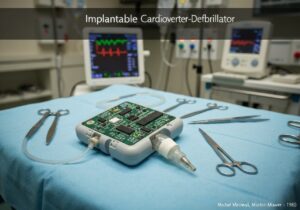To measure a user’s physiological response to a product or experience.
- 方法: 工程, 质量
Heart Rate Monitoring

Heart Rate Monitoring
- 客户体验, Human-Centered Design, 人机交互, 可用性测试, 用户体验(UX), 用户界面(UI), 用户测试
目标
如何使用
- In the context of usability testing, heart rate monitoring is used to measure a user's stress and excitement levels while interacting with a product. This can provide insights into their emotional response and help to identify areas of frustration or delight.
优点
- Provides objective data on a user's emotional response; Can identify issues that users may not articulate.
缺点
- Can be intrusive and may affect the user's behavior; The data can be difficult to interpret.
类别
- 人体工程学, 产品设计
最适合:
- Evaluating the emotional impact of a new video game or a stressful checkout process.
Heart rate monitoring in usability testing finds its applications across a range of industries, including gaming, e-commerce, and healthcare, where emotional reactions can significantly influence user experience. In the gaming industry, developers utilize this methodology during beta testing by analyzing players’ heart rate fluctuations to understand moments of peak engagement and potential frustration during gameplay, enabling them to adjust difficulty levels or narrative pacing accordingly. Similarly, in e-commerce platforms, monitoring heart rates during checkout processes allows designers to pinpoint points of anxiety that may lead to cart abandonment, thus maximizing conversion rates. In the healthcare context, heart rate monitoring can be applied when testing patient management systems, where the emotional stress experienced by users (medical staff or patients) can directly impact their satisfaction and compliance. This method can be initiated by user experience researchers, product managers, or designers who seek to obtain objective data to complement qualitative feedback gathered during traditional usability testing. Participants can include target users from varying demographics to capture a comprehensive emotional response across different segments, which can provide a well-rounded understanding of user interaction and satisfaction. The collected data can be paired with follow-up interviews or surveys, creating a robust evaluative process that transcends subjective feedback alone and leads to more 以用户为中心 design refinements.
该方法的关键步骤
- Identify the task or interaction the user will perform.
- Measure baseline heart rate prior to the task to establish a control.
- Monitor heart rate continuously during the user interaction.
- Identify peaks and troughs in heart rate data to correlate with user actions.
- Analyze heart rate data alongside qualitative feedback from participants.
- Compare emotional responses across different user interactions or test conditions.
专业提示
- Integrate heart rate data with qualitative feedback to uncover discrepancies between physical responses and user perceptions.
- Utilize time-segmented analysis of heart rate spikes to correlate specific design elements or interactions with emotional responses.
- Combine heart rate variability measurements with other biometric signals (e.g., skin conductance) for a holistic view of user emotion during interactions.
历史背景
1965
1970
1980
1980
1960
1969
1976-05-28
1980
1990
(如果日期不详或不相关,例如 "流体力学",则对其显著出现的时间作了四舍五入的估计)。









相关文章
METS 卡路里计算器
元分析
信息映射
心理模型图
可接受的最大推力和拉力
物料需求计划(MRP)